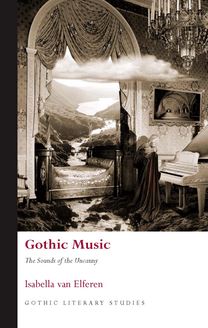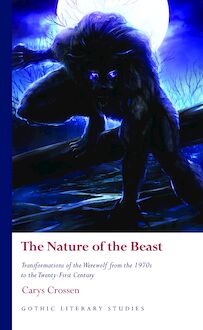-
 Univers
Univers
-
 Ebooks
Ebooks
-
 Livres audio
Livres audio
-
 Presse
Presse
-
 Podcasts
Podcasts
-
 BD
BD
-
 Documents
Documents
-
- Cours
- Révisions
- Ressources pédagogiques
- Sciences de l’éducation
- Manuels scolaires
- Langues
- Travaux de classe
- Annales de BEP
- Etudes supérieures
- Maternelle et primaire
- Fiches de lecture
- Orientation scolaire
- Méthodologie
- Corrigés de devoir
- Annales d’examens et concours
- Annales du bac
- Annales du brevet
- Rapports de stage
La lecture à portée de main
Vous pourrez modifier la taille du texte de cet ouvrage
Découvre YouScribe en t'inscrivant gratuitement
Je m'inscrisDécouvre YouScribe en t'inscrivant gratuitement
Je m'inscrisEn savoir plus
Vous pourrez modifier la taille du texte de cet ouvrage
En savoir plus

Description
Between 1790 and 1820, William Lane’s Minerva Press published an unprecedented number of circulating-library novels by obscure female authors. Because these novels catered to the day’s fashion for sentimental themes and Gothic romance, they were and continue to be generally dismissed as ephemera. Recently, however, scholars interested in historicizing Romantic conceptions of genius and authorship have begun to write Minerva back into literary history. By making Minerva novels themselves the centre of the analysis, Minerva’s Gothics illustrates how Romantic ‘anxiety’ is better conceptualized as a mutual though not entirely equitable ‘exchange’, a dynamic interrelationship between Minerva novels and Romantic-era politics and poetics that started in 1780, when Lane began publishing novels with some regularity. Reading Minerva novels for their shared popular conventions demonstrates that circulating-library novelists collectively recirculate, engage and modify commonplaces about women’s nature, the social order and, most importantly, the very Romantic redefinitions of authorship and literature that render their novels not worth reading. By recognizing Minerva’s collaborative rather than merely derivative authorial model, a forgotten pathway is restored between first-generation Romantic reactions to popular print culture and Percy Shelley’s influential conceptualization of the poet in A Defence of Poetry.
Table of Contents
Preface:
Chapter 1: Remapping Minerva’s influence on the novel market
Section One: Feminist Discernment and Minerva’s
Production of Romantic Fantasy
Section Overview
Chapter 2: Julies and St. Preuxes: Networking ‘lady’ authors, 1785-9
Chapter 3: Wollstonecraft and the revolutionary feminist novel:
At a crossroads with Wordsworth
Section Two: The Revolution Debate in Britain: Minerva and the Politics of Feeling
Section Overview
Chapter 4: Providential adaptations to the romantic fantasy, 1790-4
Chapter 5: Godwin and Providential feeling in Things As They Are:
Meeting readers where they are
Chapter 6: Providential feeling at Minerva’s zenith: what the commoner teaches the nobleman
Section Three: The Forgotten Poetics of Romantic Exchange: Gothic Habits of Mind
Section Overview
Chapter 7: Minerva’s continued influence: the Poet as Nightingale in Shelley’s 1810 Gothics
Chapter 8: Reinstating romantic fantasy in Minerva’s ‘late’ novels: Romanticism and ‘Gothic’ habits of mind
Afterword
Bibliography
List of Tables
List of Figures
Sujets
Informations
| Publié par | University of Wales Press |
| Date de parution | 15 février 2019 |
| Nombre de lectures | 0 |
| EAN13 | 9781786833693 |
| Langue | English |
| Poids de l'ouvrage | 34 Mo |
Informations légales : prix de location à la page 0,3450€. Cette information est donnée uniquement à titre indicatif conformément à la législation en vigueur.
Extrait
SERIES PREFACE
Gothic Literary Studies is dedicated to publishing groundbreaking scholarship on Gothic in literature and film. The Gothic, which has been subjected to a variety of critical and theoretical approaches, is a form which plays an important role in our understanding of literary, intellectual and cultural histories. The series seeks to promote challenging and innovative approaches to Gothic which question any aspect of the Gothic tradition or perceived critical orthodoxy. Volumes in the series explore how issues such as gender, religion, nation and sexuality have shaped our view of the Gothic tradition. Both academically rigorous and informed by the latest developments in critical theory, the series provides an important focus for scholarly developments in Gothic studies, literary studies, cultural studies and critical theory. The series will be of interest to students of all levels and to scholars and teachers of the Gothic and literary and cultural histories.
SERIES EDITORS
Andrew Smith, University of Sheffield
Benjamin F. Fisher, University of Mississippi
EDITORIAL BOARD
Kent Ljungquist, Worcester Polytechnic Institute Massachusetts
Richard Fusco, St Joseph’s University, Philadelphia
David Punter, University of Bristol
Chris Baldick, University of London
Angela Wright, University of Sheffield
Jerrold E. Hogle, University of Arizona
Minerva’s Gothics
The Politics and Poetics of Romantic Exchange, 1780–1820
Elizabeth A. Neiman
© Elizabeth A. Neiman, 2019
All rights reserved. No part of this book may be reproduced in any material form (including photocopying or storing it in any medium by electronic means and whether or not transiently or incidentally to some other use of this publication) without the written permission of the copyright owner except in accordance with the provisions of the Copyright, Designs and Patents Act. Applications for the copyright owner’s written permission to reproduce any part of this publication should be addressed to the University of Wales Press, University Registry, King Edward VII Avenue, Cardiff CF10 3NS.
www.uwp.co.uk
British Library Cataloguing-in-Publication Data
A catalogue record for this book is available from the British Library.
ISBN 978-1-78683-367-9
eISBN 978-1-78683-369-3
The right of Elizabeth A. Neiman to be identified as author of this work has been asserted by her in accordance with sections 77 and 79 of the Copyright, Designs and Patents Act 1988.
The publisher has no responsibility for the persistence or accuracy of URLs for any external or third-party internet websites referred to in this book, and does not guarantee that any content on such websites is, or will remain, accurate or appropriate.
Cover image: Isaac Cruikshank, The Lending Library , watercolour (c.1800). By permission, Yale Center for British Art, Paul Mellon Collection.
To Dylan Dryer, and to Emma and Simon Dryer-Neiman, with love and gratitude
C ONTENTS
List of Tables
List of Figures
Acknowledgements
Preface
1 Remapping Minerva’s Influence on the Novel Market
Section One: Feminist Discernment and Minerva’s Production of Romantic Fantasy
Section Overview
2 Julies and St Preuxes: Networking ‘Lady’ Authors, 1785–1789
3 Wollstonecraft and the Revolutionary Feminist Novel: At a Crossroads with Wordsworth
Section Two: The Revolution Debate in Britain: Minerva and the Politics of Feeling
Section Overview
4 Providential Adaptations to the Romantic Fantasy, 1790–1794
5 Godwin and Providential Feeling in Things As They Are : Meeting Readers Where They Are
6 Providential Feeling at Minerva’s Zenith: What the Commoner Teaches the Nobleman
Section Three: The Forgotten Poetics of Romantic Exchange: Gothic Habits of Mind
Section Overview
7 Minerva’s Continued Influence: The Poet as Nightingale in Shelley’s 1810 Gothics
8 Reinstating Romantic Fantasy in Minerva’s ‘Late’ Novels: Romanticism and ‘Gothic’ Habits of Mind
Afterword
Notes
Bibliography
L IST OF T ABLES
Table 1.1: Ratio of female novelists, categorized by ‘type’, 1780–1829
Table 1.2: Ratio of male novelists, categorized by ‘type’, 1780–1829
L IST OF F IGURES
Fig. 1.1 Differentiating between a ‘gender’ and a ‘Minerva’ effect in publication records
Fig. 1.2 Numbers of publishing female and male Minerva novelists per period, inclusively and exclusively defined
Fig. 1.3 Percentage of unidentified novelists who sign ‘by a lady’, 1780–1820
Fig. 1.4 Percentage of female novelists who sign ‘by a lady’, 1785–1820
Fig. 1.5 Percentage of novelists to publish anonymously, per period
Fig. 1.6 Author’s signature from Mary Ann Hanway’s Andrew Stuart, or the Northern Wanderer (1800)
Fig. 1.7 Numbers of all debut female novelists, 1780–1820
Fig. 1.8 The rarity of the single-novel author: a ‘Minerva effect’ dissipates in 1812–1820
Fig. 1.9 Paper sample, Minerva 1799
Fig. 1.10 Paper sample, Minerva 1820
Fig. 1.11 Paper sample, Colburn 1818
Fig. 1.12 Paper sample, Longman, Hurst Rees, Orme and Brown 1819
Fig. 1.13 Percentage of 2+ ‘persistent’ female novelists who publish from one period to the next
Fig. 1.14 Numbers of 2+ female ‘persistent’ novelists who publish in each particular period
Fig. 1.15 Persistence rate for all novelists, by percentage
Fig. 1.16 Persistence rate for all novelists, by numbers
A CKNOWLEDGEMENTS
Because this book has been long in the making, many acknowledgements are due. Special thanks, however, are due to University of Maine colleagues and especially English department chairs Naomi Jacobs, Richard Brucher, Laura Cowan and Steven Evans. Without their advocacy, I would not have had the time, space or resources to complete this book. I also want to take the opportunity to thank Naomi Jacobs, Ben Friedlander, Jennifer Moxley and Sarah Harlan-Haughey for reading chapters from the manuscript at key points along the way, and with pleasure acknowledge other UMaine colleagues for their encouragement, most especially Jessica Miller, Mazie Hough and Susan Gardner.
My research on Minerva began some ten years prior as a doctoral student at the University of Wisconsin, Milwaukee. There, Bruce Horner and Min Zhan Lu taught me to take the work of marginalized writers seriously, a pedagogical practice that influences how I approach and read Minerva novels. Now a faculty member myself, I am especially grateful to Sukanya Banerjee and Barrett Kalter for helping to supervise a project outside their areas of expertise and when still on the tenure track. The dissertation was, as it turns out, just a starting point for this book. I owe special thanks to my students at the University of Maine. Their creativity and dedication helped me to make progress on questions important to my research through a series of advanced undergraduate and graduate level courses. I have also benefited enormously from presenting my work at conferences in both North America and the UK. The scholarship of and more informal exchanges with Anthony Mandal, Jennie Batchelor, Edward Jacobs, Yael Shapira, Christina Morin, Hannah Doherty Hudson and Daniel Mangiavellano imprint this book. I am particularly grateful to Anthony Mandal for his thoughtful and thorough reading of my manuscript at a critical point in its development, and for offering his journal, Romantic Textualities: Literature and Print Culture, 1780–1840 , for a forthcoming special issue on the Minerva Press (2019). Thanks also to April London for providing a forum for annotations on novels not featured in this book with the invitation to submit to The Cambridge Companion Guide to the Eighteenth-Century Novel, 1660–1820 , and to Mark Towsey, whose AHRC -funded research colloquia ‘Libraries in the Atlantic World’ (2014–15) helped me to think more expansively about my project at an early stage in its inception.
A Chawton House Library fellowship was instrumental to my research and I extend a warm thanks to librarian Derren Bevin for allowing me free range of the stacks. Thanks also to Derren for his willingness at the eleventh hour to retake photos for a higher resolution print than I had available. Acknowledgement is also due to special collections librarians at the New York Society Library and the University of Minnesota library for providing me with a comfortable place to sit and read.
As a version of the second half of Chapter 1 was published in European Romantic Review in September 2015, thanks to Taylor & Francis for permission to reprint. I am particularly grateful to ERR editors Regina Hewitt and the late Diane Long Hoeveler for agreeing to send this article out for a second round of reviews after it had been rejected on a third read, following a mixed review. This extended review process was instrumental and a starting point for the book as it introduced me to scholarship of which I was unaware, and pushed me to clarify and refine my central argument.
With keen awareness of the potential complications that arise when looking to publish a monograph, especially perhaps a first one, I thank Sarah Lewis, Head of Commissioning at the University of Wales Press, for her encouragement of the project and for keeping me up to date with the manuscript’s process in both peer review and while in press. I am also thankful to copy-editor Henry Maas for his attentive eye and good humour.
Work on this book has been accompanied by profound changes in my life. Most notably, I became a mother (first, at the dissertation stage, and then nearly nine years later, while completing my manuscript), while also losing my beloved mother, Judy Neiman, to pancreatic cancer. I owe special thanks to family members and friends not only for their support but also, in many cases, for their input on the project. I would probably have shied from statistical analysis but for the guidance of my twin sister, biologist Maurine Neiman. My dear friend Emily Fridlund was from the first a champion of this project as well as an enthusiastic reader. Specia
-
 Univers
Univers
-
 Ebooks
Ebooks
-
 Livres audio
Livres audio
-
 Presse
Presse
-
 Podcasts
Podcasts
-
 BD
BD
-
 Documents
Documents
-
Jeunesse
-
Littérature
-
Ressources professionnelles
-
Santé et bien-être
-
Savoirs
-
Education
-
Loisirs et hobbies
-
Art, musique et cinéma
-
Actualité et débat de société
-
Jeunesse
-
Littérature
-
Ressources professionnelles
-
Santé et bien-être
-
Savoirs
-
Education
-
Loisirs et hobbies
-
Art, musique et cinéma
-
Actualité et débat de société
-
Actualités
-
Lifestyle
-
Presse jeunesse
-
Presse professionnelle
-
Pratique
-
Presse sportive
-
Presse internationale
-
Culture & Médias
-
Action et Aventures
-
Science-fiction et Fantasy
-
Société
-
Jeunesse
-
Littérature
-
Ressources professionnelles
-
Santé et bien-être
-
Savoirs
-
Education
-
Loisirs et hobbies
-
Art, musique et cinéma
-
Actualité et débat de société
- Cours
- Révisions
- Ressources pédagogiques
- Sciences de l’éducation
- Manuels scolaires
- Langues
- Travaux de classe
- Annales de BEP
- Etudes supérieures
- Maternelle et primaire
- Fiches de lecture
- Orientation scolaire
- Méthodologie
- Corrigés de devoir
- Annales d’examens et concours
- Annales du bac
- Annales du brevet
- Rapports de stage




















